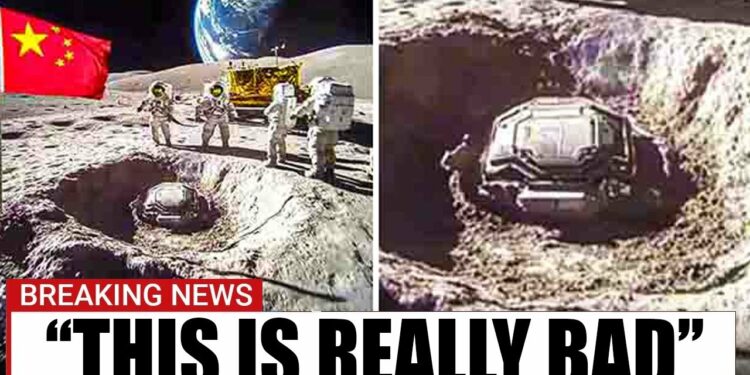In a groundbreaking announcement, Chinese scientists have revealed a lunar discovery that could revolutionize space exploration and deepen our understanding of the universe. This finding, part of China’s ambitious lunar program, has sent shockwaves through the scientific community due to its profound implications. What exactly did China uncover on the moon, and why is it so significant? Let’s explore the details of this monumental discovery.
Humanity’s fascination with the moon spans centuries, from the Apollo missions’ historic landings to modern explorations. While the U.S., Russia, and private companies like SpaceX have led lunar efforts, China has rapidly emerged as a key player. Its Chang’e program has achieved remarkable feats, including the Chang’e-4 mission’s historic landing on the moon’s far side in 2019. The latest breakthrough comes from the Chang’e-5 mission, which landed in December 2020 to collect lunar samples. What it found exceeded all expectations.
The Chang’e-5 samples revealed a mysterious substance unlike anything previously discovered on the moon. Initially thought to be lunar regolith, further analysis uncovered unique compounds, including a novel form of water. Unlike the ice found in shadowed craters at the lunar poles, this water could be extractable, offering potential resources for future missions. Water on the moon could support lunar bases by providing drinking water, oxygen, and even rocket fuel through hydrogen extraction, paving the way for sustainable human presence and missions to Mars.
Even more astonishing, the samples contained complex organic compounds—molecules essential for life. This discovery challenges the notion of the moon as a barren wasteland, raising questions about its past. Could the moon have once supported life, or do these compounds hint at dynamic processes from its formation? Such findings could reshape our search for extraterrestrial life, suggesting that life might exist in unexpected places beyond Mars.
The Chang’e-5 mission builds on China’s lunar successes, including Chang’e-3’s rover landing in 2013 and Chang’e-4’s far-side exploration. By returning lunar samples to Earth, Chang’e-5 has provided unprecedented insights into the moon’s geology and history, with potential for resource extraction. China’s space program, led by the China National Space Administration (CNSA), continues to gain momentum with plans for a lunar base, Mars missions, and a space station.
This discovery also underscores the value of global collaboration in space exploration. While China has historically operated independently, there is growing interest in sharing data and partnering with other nations. The international community is eager to study these findings, which could redefine lunar exploration and resource utilization.
Looking ahead, China’s Chang’e-6 mission will target the moon’s south pole, a region rich in water ice, while Chang’e-7 and Chang’e-8 will focus on resource extraction and testing technologies for a permanent lunar base. These efforts align with China’s goal of establishing a sustainable human presence on the moon within the next decade, potentially in collaboration with Russia through a joint lunar research station.
The moon’s newfound resources—water, organic compounds, helium-3, and rare metals—could transform it into a hub for space exploration. Water could fuel spacecraft, while helium-3 might power future nuclear fusion, offering clean energy. Lunar mining could supply materials for space missions and Earth-based industries, though it raises ethical and legal questions about resource ownership and environmental impact.
As global interest in the moon intensifies, with NASA’s Artemis program, Russia, India, Japan, and private companies like SpaceX joining the race, the moon is becoming a focal point for humanity’s future in space. Its proximity to Earth, abundant resources, and scientific potential make it an ideal testing ground for technologies and a launchpad for deep-space missions.
China’s Chang’e-5 discovery marks a turning point in space exploration. The moon, once seen as a lifeless rock, is now a resource-rich frontier with the potential to support human colonies and fuel interplanetary travel. As nations and private entities collaborate and compete, the moon will serve as humanity’s stepping stone to the stars, unlocking new possibilities for exploration, science, and survival beyond Earth. The journey has just begun, and the moon’s secrets are only starting to be revealed.























